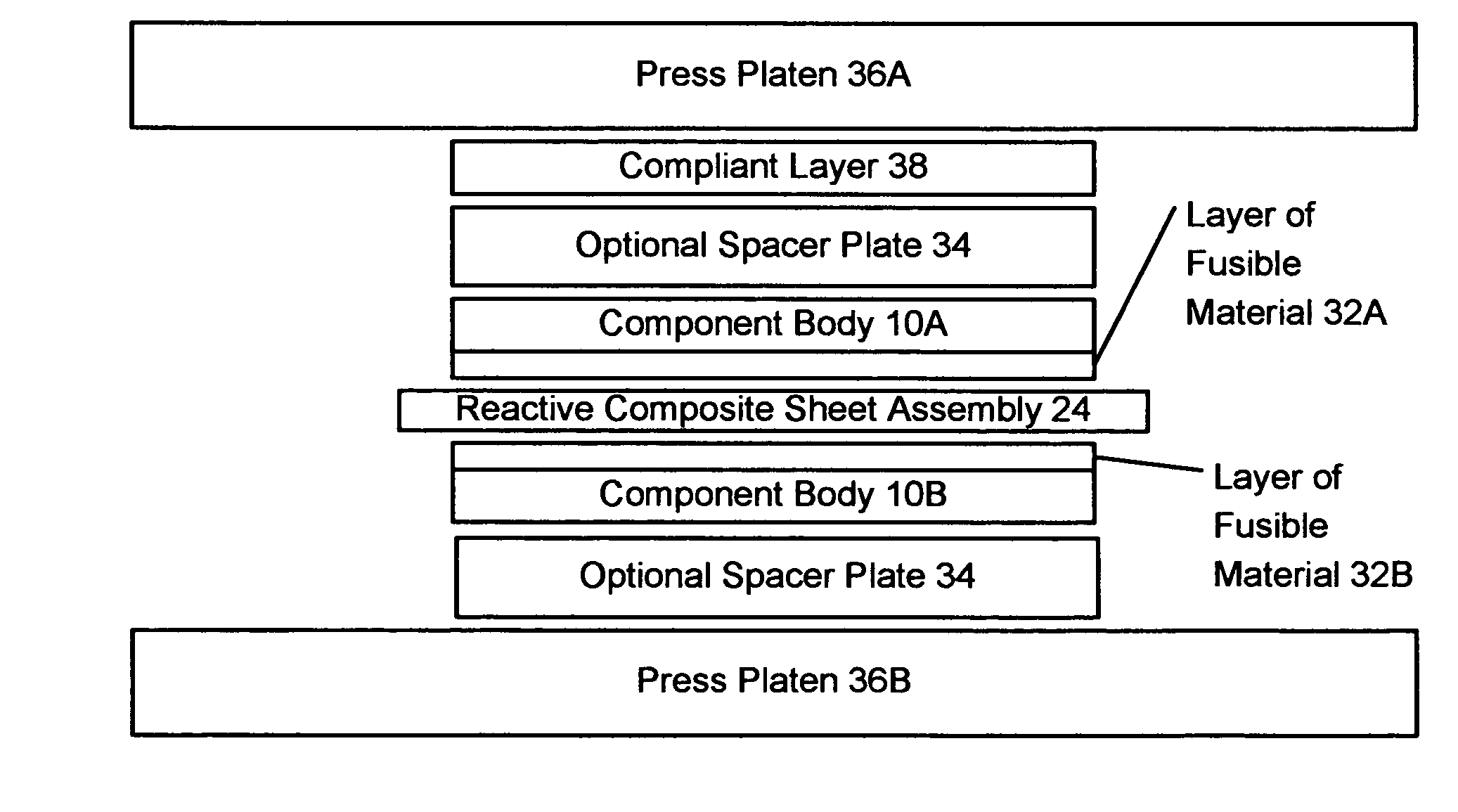Method for fabricating large dimension bonds using reactive multilayer joining
a multi-layer joining and large-scale technology, applied in the direction of manufacturing tools, soldering devices, explosives, etc., can solve the problems of residual thermal stress in the components, rapid rise in temperature within the rcm, and requiring costly and time-consuming operations, etc., to achieve rapid local heating of materials
- Summary
- Abstract
- Description
- Claims
- Application Information
AI Technical Summary
Benefits of technology
Problems solved by technology
Method used
Image
Examples
Embodiment Construction
[0038] The following detailed description illustrates the invention by way of example and not by way of limitation. The description enables one skilled in the art to make and use the invention, and describes several embodiments, adaptations, variations, alternatives, and uses of the invention, including what is presently believed to be the best mode of carrying out the invention.
[0039] As used herein, the phrase “large dimension” is used to describe a joint or bonding region and is understood to mean a joint or bonding region having either an area or length which exceeds the area or length of a single sheet of reactive composite material utilized in the joining processes, which is sufficiently large enough that a single propagation wave front from an ignition reaction within a sheet of reactive composite material fails to achieve desired bond characteristics throughout the bonding region, or which exhibits a loading variation between the center and the edges of the joint or bonding...
PUM
| Property | Measurement | Unit |
|---|---|---|
| area | aaaaa | aaaaa |
| length | aaaaa | aaaaa |
| areas | aaaaa | aaaaa |
Abstract
Description
Claims
Application Information
 Login to View More
Login to View More - R&D
- Intellectual Property
- Life Sciences
- Materials
- Tech Scout
- Unparalleled Data Quality
- Higher Quality Content
- 60% Fewer Hallucinations
Browse by: Latest US Patents, China's latest patents, Technical Efficacy Thesaurus, Application Domain, Technology Topic, Popular Technical Reports.
© 2025 PatSnap. All rights reserved.Legal|Privacy policy|Modern Slavery Act Transparency Statement|Sitemap|About US| Contact US: help@patsnap.com



